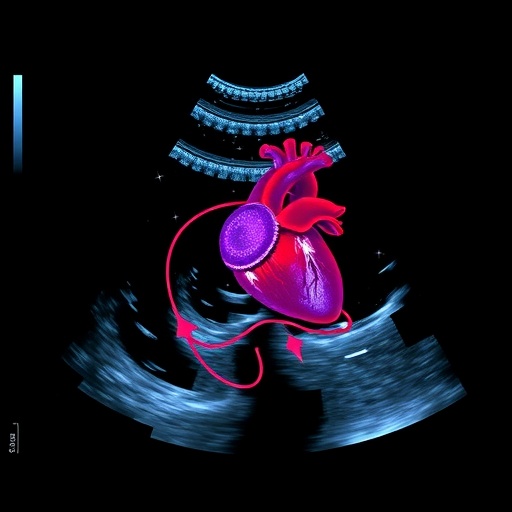A recent clinical trial has shed light on the effectiveness of patient medication information (PMI) handouts, particularly focusing on mifepristone, a drug commonly used in medical abortions. The findings underscore the gap in patient understanding when it comes to the benefits and risks associated with medications. In a landscape where comprehension is critical for making informed health decisions, the research offers significant insights into how information can be presented more effectively to enhance patient knowledge.
The study, published in the esteemed journal JAMA Network Open, compares a one-page medication guide proposed by the U.S. Food and Drug Administration (FDA) with a more detailed alternative created by a team of researchers at the University of Pittsburgh. While the FDA’s handout aims to be clear and concise, the researchers argue that it lacks the nuanced information essential for patients to truly grasp both the risks and benefits of their medications.
Lead author Tamar Krishnamurti, Ph.D., a respected associate professor at the Pitt School of Medicine, pointed out that although the FDA’s approach offers simplicity, it fails to communicate the complexities of mifepristone’s associated risks. In her view, the mere presentation of risks assumes that recipients have prior knowledge of the drug’s benefits, which may not always be the case.
In the current regulatory environment, PMIs are distributed in specific scenarios to inform patients about drugs that carry significant risks. However, these handouts often lack a standardized format, leading to lengthy, and at times convoluted, documents. According to Krishnamurti and her collaborators, the existing regulatory measures could be significantly improved to enhance both patient safety and comprehension.
The FDA’s recent proposal for a new standardized one-page PMI aims to simplify the communication of essential drug-related information. It is designed to provide clear instructions for usage, safety warnings, and potential side effects. However, critics argue that what is still lacking in this approach is a requirement to quantify the benefits of the medications or clearly outline how effective they truly are.
Krishnamurti pointed out that there might be a prevailing assumption at the FDA that healthcare providers will adequately convey the benefits of medications during consultations with patients. However, she asserts that PMIs should be self-sufficient documents capable of conveying all critical information needed for patients to make informed decisions. Additionally, she highlights the importance of communicating the probability of risks and benefits, advocating that patients deserve to know not only if an outcome is possible but also its likelihood.
As part of the study, the research team created what they termed a Decision Critical PMI, enhancing the FDA’s proposed materials with essential content that explains how mifepristone works, its success rates, and how common side effects might manifest. For instance, instead of vague statements about side effects like fever or headaches, the Decision Critical PMI provides specific statistics about how often these side effects occur. This granular approach to information-sharing could help improve patients’ understanding and decision-making processes.
To evaluate the efficacy of different PMIs, the researchers conducted an online survey involving 330 female participants. Each participant was randomly assigned one of three varying PMIs: the vendor’s five-page guide, the FDA’s one-page PMI, or the newly crafted Decision Critical PMI. Following their review of the materials, participants were assessed on their comprehension and the perceived usefulness of the handed-out information.
The results were compelling. Both the FDA’s PMI and the Decision Critical PMI were noted to exhibit higher readability when compared to the vendor’s lengthy guide. Moreover, the Decision Critical PMI significantly outperformed the other two formats in terms of facilitating comprehension, aiding in decision-making, and providing clear usage directions. This evidence supports the argument that transparency in communicating risk is vital for helping patients navigate their healthcare choices.
Krishnamurti emphasizes the necessity for transparency in medical communications, advocating for a practice where healthcare professionals empower patients to understand the implications of their medications fully. The findings align with a growing body of evidence that points to a shift in how patient information should be structured, compelling regulators like the FDA to reconsider their current guidelines for PMIs.
Interestingly, while the FDA’s proposal outlines the necessary topics to cover in PMIs, there is presently no stipulation for pharmaceutical companies to validate the effectiveness of their messaging through user testing—in other words, no requirement to assess how well patients understand their PMIs. Krishnamurti advocates for a policy shift that necessitates such testing, asserting that if the goal is to enhance patient understanding and safety, user comprehension should be a priority in the regulatory framework.
The implications of these findings are far-reaching, particularly in today’s environment, where misinformation can rapidly circulate, especially regarding medications like mifepristone that are often subject to public debate and confusion. Clear and accurate PMIs are not just beneficial but vital for equipping patients with the knowledge they require to navigate their medical options confidently.
In conclusion, the ongoing discourse surrounding medication information emphasizes the critical need for effective communication strategies in healthcare. As this research demonstrates, the way we present information can significantly influence patient comprehension and decision-making. With the potential for changes on the horizon regarding FDA regulations, there is hope for a future where patient medication information is standardized, accurate, and ultimately bolstered by user testing to ensure clarity and understanding.
Subject of Research: Effectiveness of patient medication information handouts
Article Title: Public Understanding of Risk and Benefit of Mifepristone
News Publication Date: 6-Feb-2025
Web References: JAMA Network
References: None available
Image Credits: None available
Keywords: Patient medication information, mifepristone, FDA guidelines, drug risks, patient safety, healthcare communication, informed decision-making
Tags: clinical trial insightscomplexities of medication benefitsenhanced patient knowledgeFDA medication handoutsinformed health decisionsJAMA Network Open publicationmedication risk communicationmifepristone drug effectivenesspatient medication informationpatient understanding of medicationsTamar Krishnamurti research findingsUniversity of Pittsburgh research




